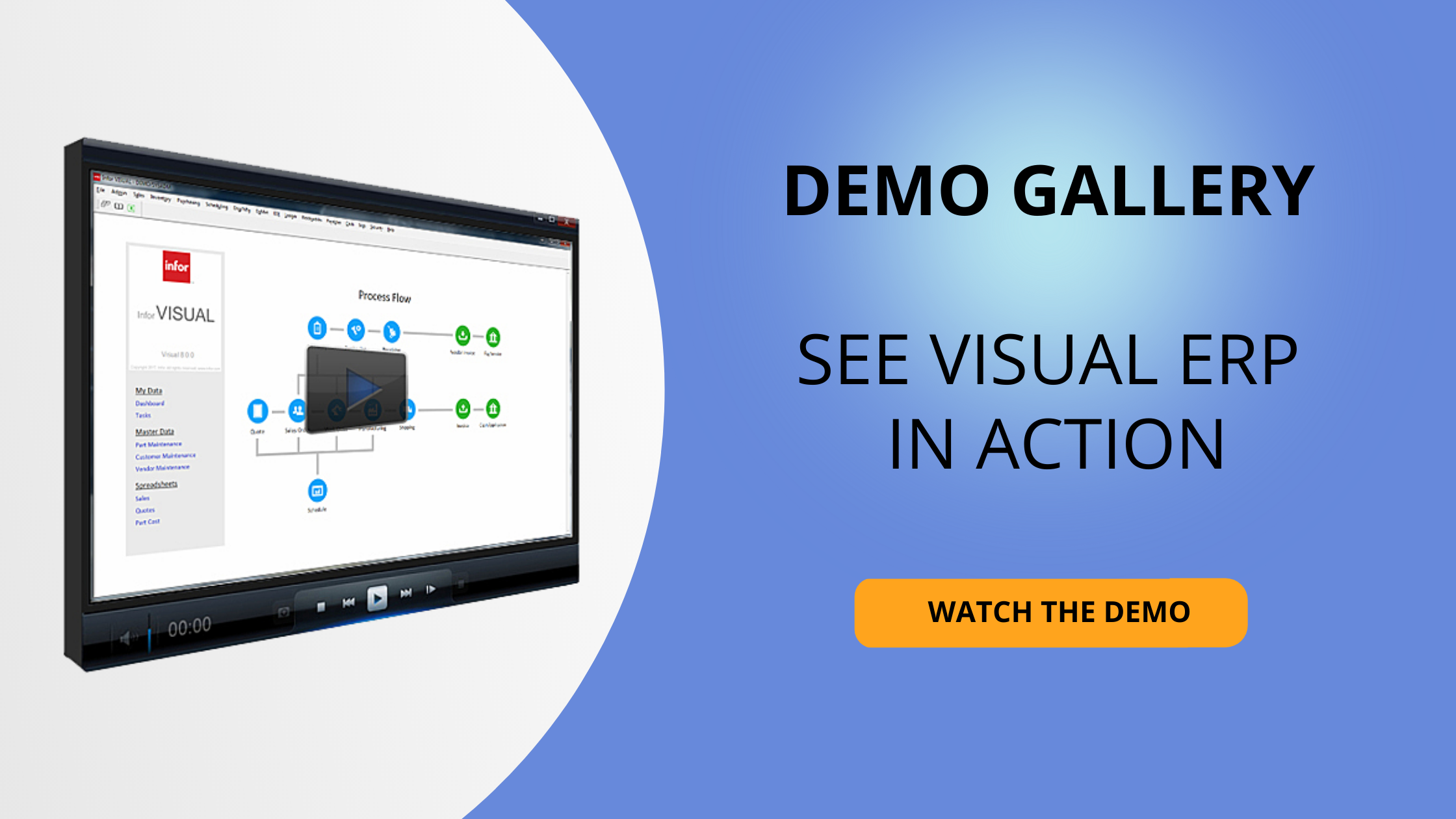Infor ERP products
Visual South sells, implements, and supports two Infor ERP products: CloudSuite Industrial (formerly known as SyteLine), and VISUAL. We are commonly asked, “What are the differences between the two?” That’s a reasonable, straightforward question, but the answer is much more nuanced because these ERP products are used to run manufacturing businesses, which are not simple and straightforward. At a high level, the two products feel similar; they are both ERP products with deep functionality. Also, at a high level, two manufacturers feel similar; they both make stuff. As you look deeper into the manufacturers, differences emerge and the same is true with the Infor ERP products. For this article, I’ll start by comparing what is similar between the two products and then work through the differences.
Need a process for your ERP selection?
CloudSuite Industrial and VISUAL – What’s the same?
Common Functionality – Both products have a lot of overlap when it comes to what I’ll call common ERP functionality: CRM, estimating, order entry, inventory control, lot/serial trace, MRP, purchase requisitions, purchase orders, engineering, engineering change control, features and options configuration, work orders, production control, quality control, scheduling, project management, labor/material barcode, shipping, receiving, A/R, A/P, general ledger, dashboards, financial reporting and hundreds of pre-configured reports. (Note: My term “common functionality” is a bit misleading. It’s common for the Infor ERP products we sell, but not everything listed is commonly found in all ERP products.) Of course, there are some differences in the user interface and features in terms of how CloudSuite Industrial and VISUAL handle the common functionality, but for this post, it’s not worth getting into.
Related topic: Most-Used Enterprise Resource Planning (ERP) Modules and Their Functions
Database Platform – Both products run off a SQL Server database platform.
Multi-Company/Multi-Site – Both products can handle multi-company/multi-site configurations in one database.
Experience – Both products have thousands of customers and a long, deep history of development and functional expansion over the years. They both have a development roadmap that extends well into the future and are actively being updated.
CloudSuite Industrial and VISUAL – What’s different?
Deployment – CloudSuite Industrial can be deployed two ways: in the cloud or on-premise. Cloud deployment runs on a true multi-tenant architecture in Amazon Web Services. On-premise is the traditional client-server installation on your in-house network.
The functionality of the CloudSuite Industrial ERP software is the same regardless of the deployment method. But there are two main areas of difference that are important to note: the “standard configuration” and how to access your data at the database level (for custom reports and such).
Let’s start with the differences in standard configuration. Many of the optional modules in the CloudSuite Industrial on-premise deployment are part of the standard configuration in the cloud deployment. In other words, you get more stuff in a cloud deployment.
Now let’s shift to accessing your data. With an on-premise deployment, you can connect to your database via ODBC and access any table in the database. This cannot be done in a multi-tenant cloud deployment (this is a good thing). Tools are available (query tool and data cubes) in a CloudSuite Industrial cloud deployment to access the data, create reports, etc.
VISUAL is only available as an on-premise deployment. It can run in the cloud, but only if it’s a “private cloud”. Basically, a company is hosting your VISUAL application and you access it via a web address.
Related topic: ERP Cloud vs. On-Premise
Architecture – CloudSuite Industrial is a web application that runs on a user’s browser. VISUAL is a client-server application that runs on a user’s computer in a Windows environment for the majority of the functionality. There is functionality that is a web application though. VISUAL Shop Floor Mobile runs on a browser (typically a mobile device) and provides information about work orders, schedules, material availability, and who is working on what. In addition, it can be used for material and labor barcode transactions.
Service Management Functionality – If your company services what it makes and that service includes sending individuals or crews to the customer site, CloudSuite Industrial has very robust service management functionality.
Portals – CloudSuite Industrial has built-in customer and vendor portals to promote stronger communication and data sharing.
Forecasting models – If forecasting finished goods inventory levels or raw material needs are part of your business model, CloudSuite Industrial has built in forecasting models.
CloudSuite Industrial or VISUAL – Which one is better?
We get this question a lot, too. It’s a reasonable question, but can’t be answered by comparing the two products. It’s like deciding which vehicle is better – a full-sized SUV or sedan? That can only be determined by understanding what the customer wants. If someone needs to regularly transport six people, the SUV seems to be a better choice. If it’s just two, the sedan works. But regardless of needs, maybe the customer simply likes the SUV better.
Customer input strongly factors into choosing the right vehicle as much as it does choosing the appropriate ERP product. What are the business issues? What is the budget? Is there a deployment preference? There is plenty more to ask, but you get the idea.
Here is the bottom line: Reasonable, straightforward questions don’t always have easy answers. But the questions can be answered. We just need to talk first, so that we are comfortable providing the best answer for you.










